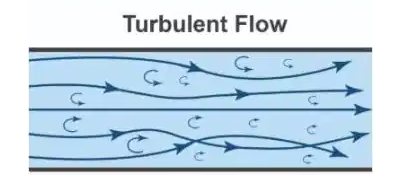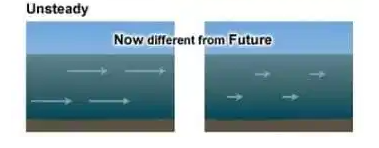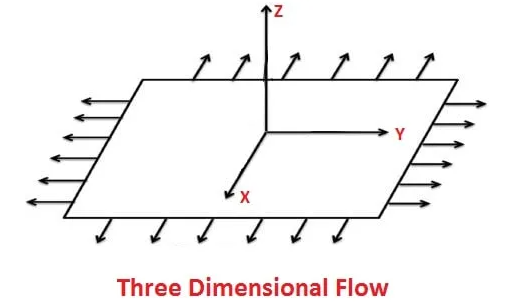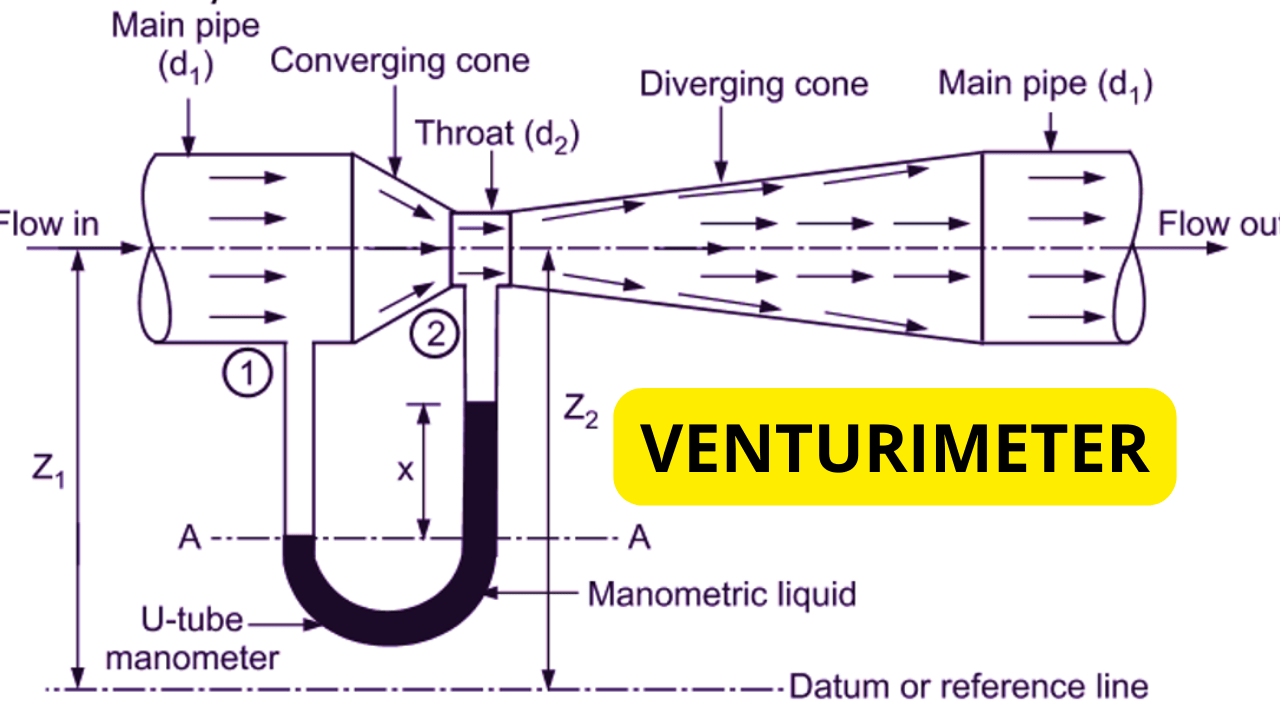Table of Contents
What is Fluid?
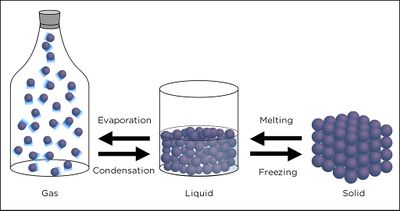
Any substance in the liquid or gas state phase or has the tendency to flow is called Fluid. For example; water, oil, gases etc.
Fluid Mechanics
Fluid mechanics is defined as the science that deals with the behavior or the study of fluids at rest (static fluids) or in motion (dynamic fluids).
Fluid Kinematics
It is a branch of fluid mechanics that deals with the response of fluids in motion without considering forces and energies.
Reynolds Number
The ratio of inertial force to the viscous force of fluid is called Reynolds Number. It is a dimensionless quantity. It helps to find the condition of flow in pipe line or in an open channel.

Classification of Fluid Flows
There are many types of fluids flow that are based on fluid characteristics like velocity, acceleration, density etc. Some of them are mentioned below:
- Laminar Flow
- Turbulent Flow
- Steady Flow
- Unsteady Flow
- Uniform Flow
- Non- Uniform Flow
- Steady Uniform Flow
- Steady Non-Uniform Flow
- Unsteady Uniform Flow
- Unsteady Non-Uniform Flow
- Compressible Flow
- Incompressible Flow
- Rotational Flow
- Irrotational Flow
- 1-D, 2-D, and 3-D Fluid Flow
1)Laminar Flow (Stream line Flow)
In laminar flow, fluid particles move in form of laminations (in form of layers) and these layers do not intersect with each other. They are moving in their own paths.
- Viscous forces are dominant in the laminar flow.
- Flow is laminar when Rn≤ 2000
2)Turbulent Flow
In turbulent flow, fluid particles do not move in form of laminations (in form of layers) and also intersect the path of each other. They are moving in form of zigzag pattern.
- Inertial forces are dominant in the turbulent flow.
- Flow is turbulent when Rn> 2000
4)Steady Flow
It is a type of flow in which the flow conditions like velocity, density, temperature, pressure remains constant with respect to time at a particular section. It can be written as:
- For example: Flow in canal is a steady flow
5)Unsteady Flow
It is a type of flow in which the flow conditions like velocity, density, temperature, pressure change with respect to time at a particular section. It can be written as:
- For example: Flows in river is a unsteady flow
6)Uniform Flow
It is a type of flow in which the flow conditions (v, P, T, ) remain constant with respect to distance at any instant of time. It can be written as:
- For example: All pipes of uniform diameter
7)Non-Uniform Flow
It is a type of flow in which the flow conditions (v, P, T, ) does not remain constant with respect to distance at any instant of time. It can be written as:
- For example: All pipes of non-uniform diameter
8)Steady Uniform Flow
It is a type of flow in which the flow conditions (v, P, T, ) remain constant with respect to time at one particular section as well as constant with respect to distance at any instant of time. It can be written as:
- For example: A pipe of constant diameter with constant discharge
9)Steady Non-Uniform Flow
It is a type of flow in which the flow conditions (v, P, T, ) remain constant with respect to time at one particular section and changes with respect to distance. It can be written as:
- For example: Flow in conical pipe with constant discharge
10)Unsteady Uniform Flow
It is a type of flow in which the flow conditions (v, P, T, ) does not remain constant with respect to time at one particular section but remain same with respect to distance at any instant of time. It can be written as:
- For example: A pipe of uniform diameter with changing flow
11)Unsteady Non-Uniform Flow
It is a type of flow in which the flow conditions (v, P, T, ) change with respect to time as well as with respect to distance at any instant of time. It can be written as:
- For example: flow in conical pipe with varying discharge
12)Compressible Flow
In this type of flow the density of fluid can vary from one point to another. It means density is not constant it can be change during the flow.
- For example: Gases are Compressible
13)Incompressible Flow
In this type of flow the density of fluid does not vary from one point to another. It means density remains constant.
- For example: Liquids are In-Compressible
14)Rotational Flow
In this type of flow, the fluid particles rotate on their own axis during the flow of fluid.
15)Irrotational Flow
In this type of flow, the fluid particles do not rotate on their own axis while they were flowing along he flow lines.
16)1-D, 2-D, and 3-D Fluid Flow
i)One- Dimensional Flow
It is a type of flow in which flow conditions like velocity, pressure, density etc change only in the direction of flow but not along the cross-section.
- All the parameters of fluid flow can be expressed as functions of time and space coordinates only.

ii)Two – Dimensional Flow
It is a type of flow that can be assumed only when the flow conditions are different in x and y directions, means part of fluid flowing in horizontal direction (X-axis) and the other part of fluid is flowing in vertical direction (Y axis)
For example: Fluid flowing over a weir
- There is no variation in Z-direction
- All the parameters are expressed as functions of time and two space coordinates
iii)Three – Dimensional Flow
It is a type of flow in which the hydrodynamic parameters are the function of three space coordinates and time. (X axis, Y axis, Z axis)



